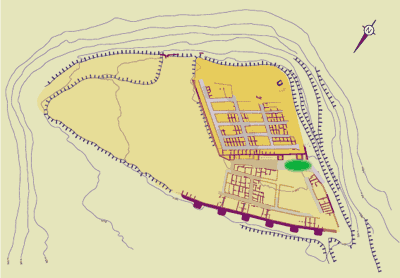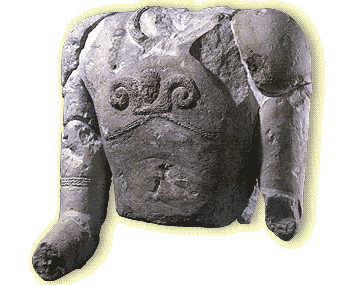- Home
- Architecture and settlement
- Places of worship
- Presentation of the statuary
Plan of a zone where several hundred fragments of sculptures (in the round) made from fine limestone are dispersed.
Some of the first major discoveries, from 1943 to 1956, were made among a group of several hundreds of fragments of sculptures in the round made from a fine limestone. While other discoveries have been made at other locations of the site, this sector is unquestionably of major importance. It is located near the principal entrance of settlement 2, but also in proximity to the old access road to settlement 1. Furthermore, the burial conditions of these fragments, which were created by the purposeful breakage of sculptures, prevents us from determining their precise stratigraphic context.
We have no information concerning the manner in which the members of large aristocratic families, men, women, and perhaps even adolescents, were presented in proximity to several seated heros.
A headless torso with a decorative clamp found in 1943.
Meanwhile, recent research has suggested that some of these elements were reused in the maintenance of the last principal street, which would indicate their disappearance during the last stages of the occupation of the site (after 125 BC). But this information does not tell us when the sculpted pieces were created, nor where they were originally placed.

